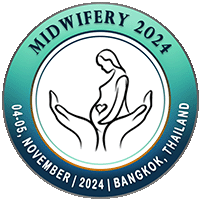
Giacomo Biasucci
Guglielmo da Saliceto Hospital, ItalyTitle: The impact of new continuous glucose monitoring (CGM) devices versus self-management of blood glucose (SMBG) on the daily life of parents and children affected by type 1 diabetes
Abstract
Background: Type
1 diabetes mellitus is a chronic autoimmune endocrine and metabolic disease
which frequently occurs during infancy and childhood. Self-monitoring of blood
glucose (SMBG) is of utmost importance to achieve good glycemic control. Common
side effects of SMBG in children are pain, discomfort, skin induration, and
reduced tactile sensitivity; moreover, SMBG does not allow continuous glycemic
monitoring. The more recent introduction of much less invasive devices for
continuous glucose monitoring (CGM) has indeed reduced procedure-related pain
and discomfort and allowed real-time glycemic monitoring.
Methods: From
the beginning of May to the end of September 2019, we conducted a survey by
means of a two-section (children/parents) questionnaire, aimed at assessing the
impact of CGM on children affected by type 1 diabetes mellitus and their
families, referring to the Pediatric Diabetes outpatient clinic at Guglielmo da
Saliceto Hospital in Piacenza, Italy.
Results: The vast majority (80%) of children
reported that the placement of the glycemic sensor is much less painful than
fingertip multiple capillary punctures, as with traditional SMBG. Likewise, 90%
of parents think that the use of CGM devices allowed a remarkable improvement
of glycemic control, with regard either to the reduction of hypo- and/or
hyper-glycemic episodes or to glycated hemoglobin (HbA1c) level. Moreover, 89%
of parents believe that the use of glycemic sensors has led to a sharp
improvement in children’s quality of life. According to children, school and
sport are the two areas with the most evident improvement in their quality of
life; less anxiety, high comfort, and better glycemic control, particularly when
not at home, have been indicated as major benefits.
Conclusions: According to our data, the use of CGM
devices can significantly improve the quality of life of type 1 diabetic
children and their families.
Biography
Giacomo Biasucci
graduated in Medicine and Surgery at the University of Milan, where he also
achieved his post-graduate degree in Pediatrics, and in Neonatology. He has
become Head of the Pediatrics & Neonatology Unit and of the Mother and
Child Health Department at Guglielmo da Saliceto Hospital in Piacenza, Italy
since 1999. Recently, he has been appointed as Associate Professor of
Pediatrics at the University of Parma, Italy. His main field of interest are
Inborn Errors of Metabolism, Pediatric Eating Disorders and Pediatric
Nutrition. He has about 120 publications in international peer-reviewed
journals that have been cited over 1900 times, and his publication h-index is 21
(data by Scopus). He has been serving as guest editor of international journals
and as board member of several reputed journals.

